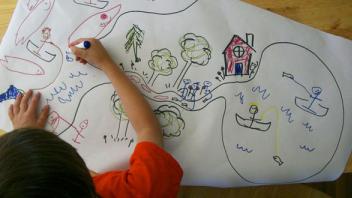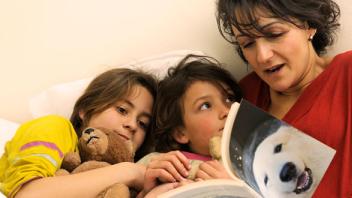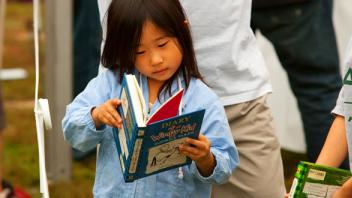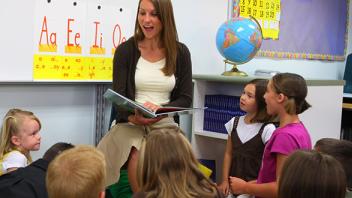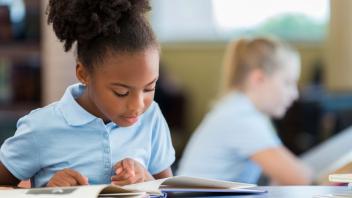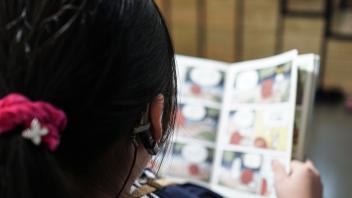Introduction
Reading is a complex endeavor. We need to build children’s literacy skills but we often forget that developing their will to read and write is just as vital. Research has shown that children who are highly motivated often read more, have larger vocabularies, and make achievement gains beyond their less motivated classmates.
To develop lifelong readers and writers, children’s motivation and engagement must be an intentional focus of our instruction across grade levels.
“Operation motivation”
In his widely-cited research, psychologist John Guthrie describes different kinds of motivations for reading, including the following:
- Curiosity: the desire to learn about a topic
- Aesthetics: the enjoyment of experiencing a literary text
- Challenge: learning complex ideas from text
- Social: students read in groups during instruction and share texts in many social situations
For younger readers, curiosity, engagement, and relevancy of book choices impact children’s level of curiosity about words and concepts, engagement with text and topics, and belief in themselves as readers, writers, and learners. Read alouds, small group reading materials, classroom libraries, and even phonics readers, should all be viewed as tools to build children’s engagement with text. Choosing text that matches children’s interests and providing opportunities for children to choose the books they read are easy ways to pique engagement.
However, choosing the right text is only the beginning of “operation motivation.” How we spark curiosity, support intentional discussions, and provide children opportunities to write to express their ideas is just as important in building their positive self-efficacy, motivation, and engagement with reading and writing. Part of building children’s motivation involves the consideration of not just the reader or text, but also the context in which children read and write:
- Do kids have opportunities to freely read and write as well as with peers and their teacher?
- Are discussions with peers infused throughout your reading and writing instruction?
Let’s dig in and find out how children can get excited about learning through active engagement with texts and with their peers.
Strategies to boost engagement (and a lot more)
Here are some strategies and activities to get kids actively engaged with books and texts they are reading.
Think-alouds
Read a selected passage aloud. At certain points stop and “think aloud” questions and answers, modeling what good readers do. For example, if you’re reading A River Dream by Allen Say, you might say “This book reminds me of the time my father took me fishing. Do you remember a time when you went fishing or did something fun outside with your family?” Or, if you’re reading Stellaluna by Janell Cannon, you might encourage discussion by saying “This story helps me understand that we are all the same in many ways, but it’s our differences that make us special.”
Dialogic read alouds
The best read alouds are very interactive: You are talking about and reading the story, asking questions about the characters, and possibly wrestling with a rich, new vocabulary word. Conversation is encouraged. Research shows that dialogic reading builds oral language, vocabulary, and comprehension skills. And it lets kids see that reading is fun! In the video featured below, you’ll see an example of an active read aloud with the nonfiction book, The Vegetables We Eat.
Visualizing
Begin reading, then pause after a few sentences or paragraphs that contain good descriptive information. Ask students to share the image created in their minds by the text, and talk about which words from the book helped them visualize that picture. Learn more about using visual imagery.
Jigsaw
Introduce a thematic topic for the class to learn about, then organize kids into groups, each one with a specific focus on that topic. After a time, bring all the groups together to share what they’ve learned. Jigsaw is a great strategy for kids that like to dive deep into a subject, and gives them a chance to shine. Learn more about Jigsaw.
Text sets
Collection of texts and other materials on a topic or theme give kids multiple ways to learn about a topic. Text sets offer a mix of genres and reading levels, and can also include magazine and newspaper articles, primary source materials like letters and photographs, infographics, timelines, video, and podcasts.
Reader’s theater
In this lively kind of read-aloud, a group of kids are assigned a part or character, they practice getting the prosody (expression and pacing) right, and then present their reading to the group. Simple props can be introduced to add to the dramatic fun. Get more tips plus links to Reader’s Theater scripts.
Word maps
Select one or more new vocabulary words from a text you’re reading. Have kids answer the questions “What is it?” “What is it like?” and “What are some examples?” Encourage students to use synonyms, antonyms, create their own “kid definition,” and a picture to help illustrate the new word or concept. Find out more about Word Maps.
Silent conversation
In small groups, one student starts the conversation by writing a response or question about the text on a sheet of paper, then passes it to another who responds to what they said in writing. At the end, groups can share their silent conversations.
Roundtable
Give students a chance to talk about what intrigues, bothers, or confuses them about the book or text they just read. Or try this variation, where two to four students sit in middle of circle and talk about a text. The class makes observations about the conversation, then other students rotate into the circle.
Timelines and maps
Draw and label a timeline to show the beginning, middle, and end of the story they’ve just read. Or try a whole-class story sequence activity. Or draw a map of the setting in the story.
Realia
Use concrete objects — often called “realia” — to tap into what students may already know, and then connect it to building new knowledge. In the video featured below (from our sister site Colorín Colorado), a second grade teacher describes the realia activity she used to introduce the picture book Burro’s Tortillas.
A note about complex text
As Guthrie noted in his research, the challenge of tackling and succeeding in understanding a challenging text can be very motivating for kids. In the earlier grades, you’ll want to go slow with introducing complex text — be sure the kids have a solid footing with the foundations of reading (decoding and fluency).
Kids need a lot of encouragement and support to succeed with demanding text. Let them know that the book or text they are reading will be a stretch, but that you are there to help them work through it. Here are some key ways you can help:
- Model your own thinking process.
- Review tricky vocabulary, including academic language.
- Introduce kids to figurative language — idioms, metaphors, hyperbole, and onomatopoeia. Picture books are great for teaching about figurative language.
- Activate inferencing skills. One model you can use to teach inference is called “It says, I say, and so” developed by Kylene Beers. Get more details about teaching inference in our strategy library.
- Connect the text with students’ background knowledge
- Explicitly teach sentence structure. Complex text will often use multiple verb tenses, nested clauses, and anaphoric references. Try sentence unpacking — rewriting complex sentences as a series of simple sentences — to help kids break down and comprehend complex sentences.
- Read and reread, using different strategies: silent reading, read alouds, choral reading with peers, and listening to the text being read aloud by an adult while following along with the text.
- Check frequently for understanding, using simple, informal techniques. Summarizing is particularly effective — see our Classroom Strategy Library for ideas.
Book choice matters
If we want children to see reading as anything more than a school job, we must give them the chance to choose their own books and develop personal connections to reading, or they never will.
Donalyn Miller, The Book Whisperer
Adults can and should guide kids to books, but it’s also important to let children feel their own sense of agency in choosing what to read. Here are some tips and ideas to nurture that independence.
- Encourage kids to read widely across different genres. If a child is passionate about a certain topic (for example, space travel), introduce them to pictorial informational books (such as the DK series), fantasy, science fiction, historical fiction, picture book biographies, magazines, and poetry about space, planets, flight — and extraterrestrials!
- Build a diverse home and classroom library. It’s human nature for children to want to see and read about people who look like them or share cultural and life experiences. Make sure that your library gives children that important mirror, but also a window into the lives of people who are different from them.
- Make lots of trips to the school and public library. Colorful, inviting book displays and engaging library events can spark enthusiasm for books and reading — think “maker labs,” scavenger hunts, and interactive read alouds.
- Press play on audiobooks. Audiobooks are a wonderful way to expose children to complex language, expressive reading, and fantastic stories. Listening to audiobooks also gives kids the valuable and enjoyable experience of using their own imaginations to visualize the people and places they’re hearing about.
- Organize a school or community book swap. This is a great way to freshen your libraries, and organizing the event (publicity, bookmark giveaways, creating genre tables) can be a lot of fun.
- Highlight graphic novels. For many kids, including children who may find reading hard, graphic novels are especially appealing. Bold illustrations, smaller bites of text, and a page-turning structure keep young readers engaged. There are so many wonderful graphic novels for younger readers. Browse our Book Finder tool to discover new titles.
- Showcase series books. Series books reintroduce beloved characters in new stories, with recognizable plot structures and familiar storylines such as making friends, solving mysteries, or going on amazing adventures. The author’s writing style also begins to feel familiar. These features can be reassuring to readers and make them eager to dive into the next book.
Reading is a passport to countless adventures.”
Mary Pope Osbourne, author of the Magic Tree House series
How to Get and Keep Boys Reading
Award-winning authors Jon Scieszka, Gene Luen Yang, Jarrett Krosoczka, Jack Gantos, and Jeff Kinney gathered at Kinney’s bookstore in Plainville, Massachusetts for a lively panel discussion on how to motivate boys to become lifelong readers. Watch the discussion
Special events and activities
Author studies
Kids who are hooked on books by certain authors may want to learn more about the person who wrote some of their favorite books. Author studies help children develop their reading, writing, research, and critical thinking skills as well as establish a stronger community of readers. Author studies can expose kids to different literary voices and styles. And they’re fun! Our Author Study Toolkit gives you the step-by-step.
Inclusive book and literacy celebrations
Special literacy events and celebrations can be a great way to get kids excited about books and reading. But for kids who struggle with reading, these kinds of events can challenge their self-confidence. There are ways to create a successful, joyful reading event for all kinds of readers and learners. For example: listen to kids’ voices in planning the event, offer students choices about how they will participate, and embrace a “choose your own adventure” spirit. Include student supports, accommodations, and accessibility considerations in the planning. Find more strategies in our article, All Kinds of Readers: A Guide to Creating Inclusive Literacy Celebrations for Kids with Learning and Attention Issues.
Book clubs for kids
Book clubs can strengthen the social-emotional aspect of reading — sharing favorite books and authors, or talking about characters that reflect your own life or help you understand someone else’s. The key is to keep the club as kid-centered as possible. Well-meaning adults can sometimes introduce too much structure and the club can feel too much “like school.” But if there’s no structure … well, chaos can ensue! Check out these resources that can help you get a book club started, and keep it going for as long as there is enthusiasm.
- Book Club Basics (NEA’s Read Across America)
- How to Start a Book Club for Kids (PBS KIDS)
- The Ultimate Guide: How to Start Book Clubs for Kids (Imagination Soup)
There is more treasure in books than in all the pirate’s loot on Treasure Island.
Walt Disney
Featured video
Learn more about reading motivation
Children’s Books
The Importance of Reading Widely
Children’s Books
Book Swap for Kids
Shanahan on Literacy
The Role of Motivation in Teaching with Complex Text
Shanahan on Literacy
Won’t Student Motivation Be Damaged If We Teach with Complex Text?
Shanahan on Literacy
Does Independent Reading Time During the School Day Create Lifelong Readers?
Book Life
My Avid Book Listener
Children’s Books
Listen and Learn with Audiobooks
Children’s Books
Favorite Books for Kids with Learning and Attention Issues
Books about reading motivation
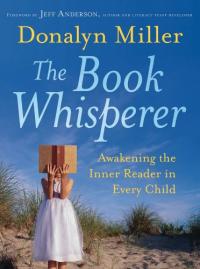
The Book Whisperer: Awakening the Inner Reader in Every Child
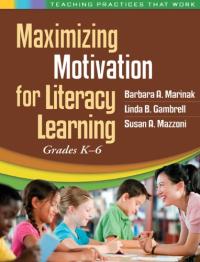
Maximizing Motivation for Literacy Learning: Grades K-6
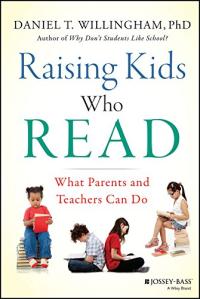
Raising Kids Who Read: What Parents and Teachers Can Do
Research about reading motivation
Browse our reading motivation resource library
Learn more about how to nurture reading motivation through our articles, tips for parents, video, and research briefs. Visit our Motivation section


